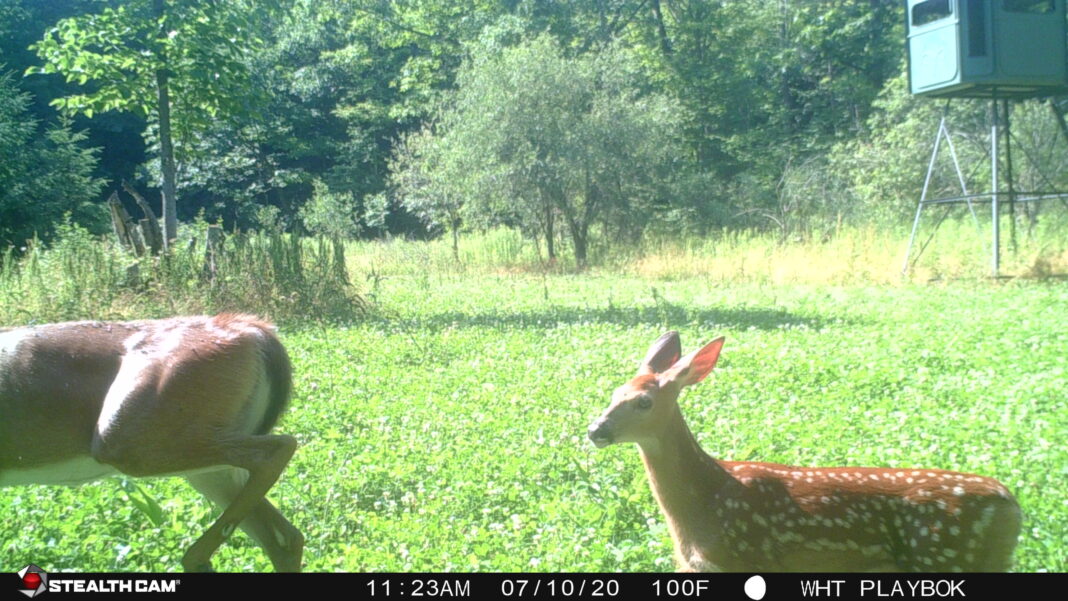It’s Time to Start Counting Fawns
If you aren’t keeping track of the fawns living on your hunting property it’s time to start, and that means now. Fawns are the life blood of your deer herd is like a killer winter, 3-year drought or outbreak of EHD. Late summer to early fall is the time to start taking a good hard look at your herd’s fawn production. The fawns have made it past the vulnerable new-born stage, have made it past the hay bines and can pretty much outrun most predators (sans those running the highways). The fawns you see today will probably be around come hunting season, and hopefully for years to come.
https://www.facebook.com/thehuntingpage/videos/10156338601435797/?t=0
Wildlife experts refer to fawns that make it to late summer as “recruits”, they now are “official” members of the herd. A herd’s fawn production is typically indexed with a simple mathematical computation and reported as a “recruitment rate”. A herd’s recruitment rate can vary from year to year and is one of the key indicators of a herd’s health. Every time you squeeze a trigger you are making a deer management decision and chances are that decision will have something to do with your herd’s recruitment rate, or at least it should be. Recruitment rates are calculated by counting the number of adult does and comparing this to the number of “recruits” or fawns produced that year. If you can count you can keep track of your herd’s recruitment rate. Grab a 100 or so trail cam photos and for every fawn you can count an adult doe your recruitment rate is 1.0. If you count 10 does and for every 10 fawns your recruitment rate is also 1.0 Ten does to 5 fawns would give you a rate of .5 which for most areas of the country is on the low side. Ten does to 15 fawns comes to 1.5 or pretty high. Average recruitment rates are somewhere around 1. Low rates are a fraction of 1 like .3, .4, or .5. some areas with severe predation are severe winters can be even lower. High rates are 1.2 or higher, Populations tend to rise when the index is above 1.2 and begin to fall less than 1.
So why bother with all this counting and calculating, doesn’t the agency do that before they issue doe harvest quotas. The short answer for most regions is “no”, chances are the state you hunt in sets doe harvest quotas using data other than your property’s recruitment rate, they seldom if ever know what is going on your back 40, chances are also that the recruitment rate you calculate is better than the data used by your agency when setting doe harvest quotas. Establishing your recruitment rate will tell you how many does you should be harvesting this fall. An average to above average recruitment rate will typically will allow you put a few does in the freezer without negatively impacting the population of the herd. Keep in mind that too many deer is as big a problem as too few. With an average recruitment rate of 1.0 you can remove roughly 30% of the adult does in the herd without significantly lowering the population of the herd. Remove 50% of the does and the population drops. Remove 5% and it will increase. Remember too many deer are just as harmful as too few. Basically, the math is pretty simple, if you can count and do some simple division you can get to the recruitment rate.

Trail cameras are a major plus when counting and don’t ignore doing plenty of woods field counting. Knowing your fawn recruitment rate and having a well-educated trigger finger will help you keep your deer herd in line with the habitat they depend on.
======> Here’s a little bonus – from our friends at Stealthcam:
https://www.facebook.com/stealthcam/posts/2961623607209724
.



















![The Best Deer Camp Chili [VIDEO] Deer Chili Ingredients, Tomatoes, Chili Spices](/wp-content/uploads/2015/10/Deer-Chili-Deer-Camp-Recipe-218x150.jpg)
![How to Call Elk Early in the Season [VIDEO]](/wp-content/uploads/2016/08/byers003-218x150.jpg)




![Idiots Disturb Hunter: How Would You Have Handled It? [VIDEO]](/wp-content/uploads/2015/10/DSC00110-e1474487693878-100x70.jpg)
![Albino Buck Shocked to Shed His Antlers [VIDEO]](/wp-content/uploads/2015/10/AlbinoDeer-100x70.jpg)